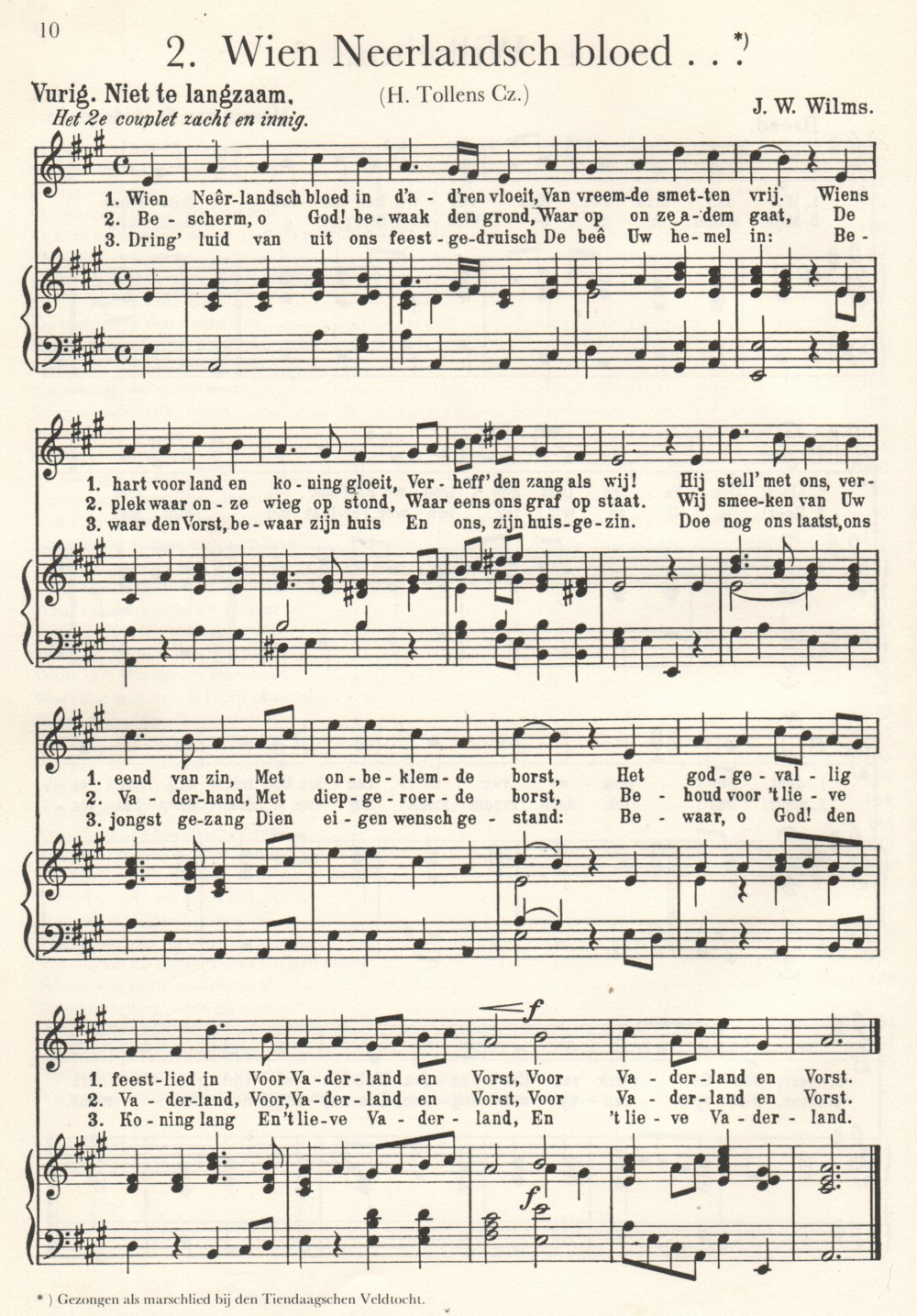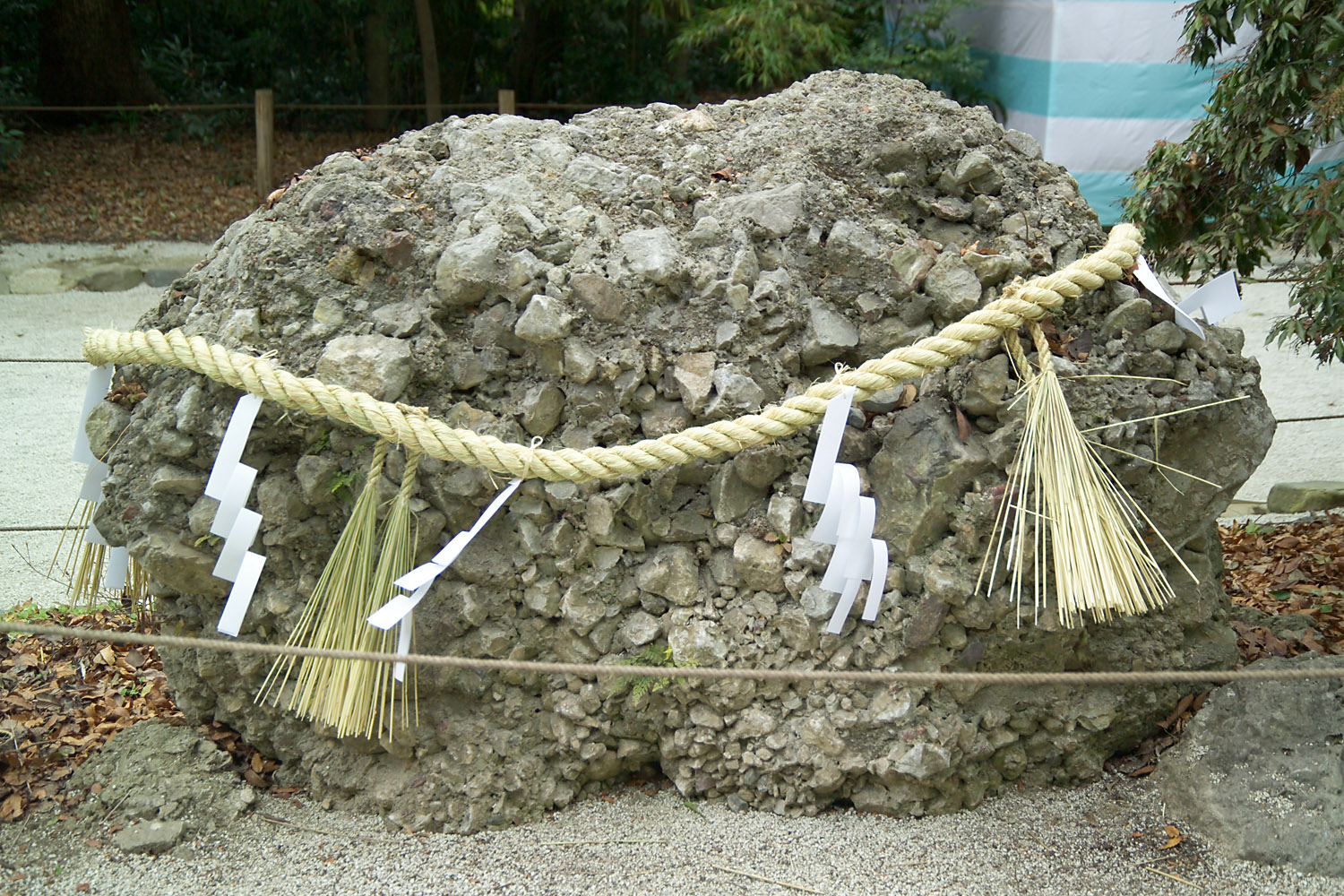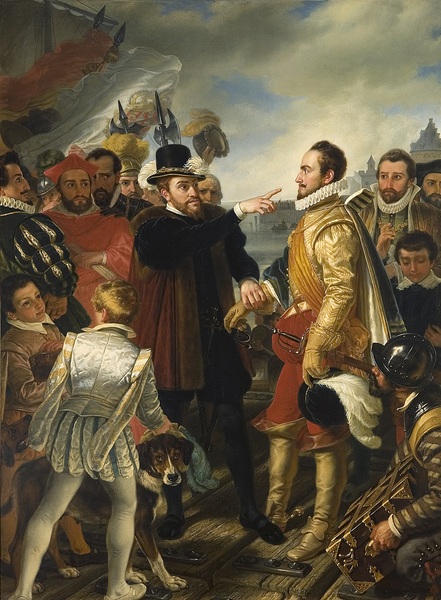|
Wilhelmus
"Wilhelmus van Nassouwe", known simply as "Wilhelmus", or written with the article as "Het Wilhelmus", is the national anthem of both the Netherlands and its sovereign state, the Kingdom of the Netherlands. It dates back to at least 1572, making it the oldest national anthem in use today, provided that the latter is defined as consisting of both a melody and lyrics. Although "Wilhelmus" was not recognized as the official national anthem until 1932, it has always been popular with parts of the Dutch population and resurfaced on several occasions in the course of Dutch history before gaining its present status. It was also the anthem of the Netherlands Antilles from 1954 to 1964. The name is derived from its first word, which is the Latinization of the Germanic name Wilhelm (the English version is William), used for official records during that time in Dutch speaking lands or when considering the entire first line which is how the anthem is also referred to, "Wilhelmus van Nassouwe ... [...More Info...] [...Related Items...] OR: [Wikipedia] [Google] [Baidu] |
De Wilhelmus
"" (; Luxembourgish language, Luxembourgish for "The Wilhelmus") is the Monarchy of Luxembourg, grand ducal anthem of Luxembourg. Lyrics for it were written in 1919 by Luxembourgish writer Nik Welter, although they are not often used in official performances. The Personal anthem, anthem is performed whenever a member of the Grand Ducal Family enters or leaves an official ceremony, while the national anthem, "Ons Heemecht", is performed at national celebrations. The anthem can be and also was known by just "Wilhelmus" or "Wilhelmuslid" (The Wilhelmus song), but it has become custom to always write it with the Luxembourgish article "De", and Wilhelmus van Nassouwe , the anthem of the Netherlands is generally written without the article or with the Dutch language, Dutch article "Het" in order to distinguish between the 2. History "" has a common origin with the Dutch national anthem, "Het Wilhelmus", which dates back to the 16th century, it is believed that the melody of this anth ... [...More Info...] [...Related Items...] OR: [Wikipedia] [Google] [Baidu] |
Wien Neêrlands Bloed
''Wien Neêrlands bloed'' (''Those in whom Dutch blood'') was the national anthem of the Netherlands between 1815 and 1932. History At the foundation of the Kingdom of the Netherlands in 1815, it was decided that a national anthem was needed. The song "Het Wilhelmus" – which is the national anthem today – was already well known in the time of the Dutch Republic. At that time, however, it was more of a party or faction hymn than a national one, being associated with and glorifying the House of Orange – which in the politics of the 17th and 18th century Netherlands had enthusiastic supporters but also bitter foes. In particular, the Wilhelmus was unpopular with the anti-Orangist Patriot party, which dominated the country (under French tutelage) for a considerable time. Following the fall of Napoleon, the new prince of the Netherlands, William Frederick of Orange, believed his family's factional song was no longer suitable for the times. William Frederick had also gained s ... [...More Info...] [...Related Items...] OR: [Wikipedia] [Google] [Baidu] |
National Anthem
A national anthem is a patriotic musical composition symbolizing and evoking eulogies of the history and traditions of a country or nation. The majority of national anthems are marches or hymns in style. American, Central Asian, and European nations tend towards more ornate and operatic pieces, while those in the Middle East, Oceania, Africa, and the Caribbean use a more simplistic fanfare. Some countries that are devolved into multiple constituent states have their own official musical compositions for them (such as with the United Kingdom, Russia, and the Soviet Union); their constituencies' songs are sometimes referred to as national anthems even though they are not sovereign states. History In the early modern period, some European monarchies adopted royal anthems. Some of these anthems have survived into current use. " God Save the King/Queen", first performed in 1619, remains the royal anthem of the United Kingdom and the Commonwealth realms . , adopted as the roya ... [...More Info...] [...Related Items...] OR: [Wikipedia] [Google] [Baidu] |
Contrafactum
In vocal music, contrafactum (or contrafact, pl. contrafacta) is "the substitution of one text for another without substantial change to the music". The earliest known examples of this "lyrical adaptation" date back to the 9th century in Gregorian chant. Categories Types of contrafacta that are wholesale substitution of a different text include the following: Significantly different lyrics in another language While a direct translation that preserves original intent might not considered a "substitution", the lyrics of the following songs redone in another language have a substantially different meaning: * The melody of the French song Ah! vous dirai-je, maman (English: Oh! Shall I tell you, Mama) is used in English for " Twinkle, Twinkle, Little Star", the " Alphabet Song", and " Baa, Baa, Black Sheep", while all of the following use the melody: the German Christmas carol "" (Santa Claus is Coming Tomorrow) with words by Hoffmann von Fallersleben, the Hungarian Christmas ... [...More Info...] [...Related Items...] OR: [Wikipedia] [Google] [Baidu] |
Kingdom Of The Netherlands
The Kingdom of the Netherlands (, ;, , ), commonly known simply as the Netherlands, is a sovereign state consisting of a collection of constituent territories united under the monarch of the Netherlands, who functions as head of state. The realm is not a federation; it is a unitary monarchy with its largest subdivision, the eponymous Netherlands, predominantly located in Northwestern Europe and with several smaller island territories located in the Caribbean. The four subdivisions of the Kingdom— Aruba, Curaçao, the Netherlands, and Sint Maarten—are constituent countries ( in Dutch; singular: ) and participate on a basis of equality as partners in the Kingdom. In practice, however, most of the Kingdom's affairs are administered by the Netherlands—which comprises roughly 98% of the Kingdom's land area and population—on behalf of the entire Kingdom. Consequently, Aruba, Curaçao, and Sint Maarten are dependent on the Netherlands for matters like foreign policy and ... [...More Info...] [...Related Items...] OR: [Wikipedia] [Google] [Baidu] |
Adriaen Valerius
Adrianus Valerius, also known as Adriaen Valerius, (c. 1575 – 1625) was a Dutch poet and composer, known mostly for his poems dealing with peasant and burgher life and those dealing with the Dutch War of Independence, assembled in his great work ''Neder-landtsche gedenck-clanck.'' Life Valerius was born about 1575 in Middelburg to an ethnic French notary, François Valéry. His father had a somewhat prosperous career as a notary and customs official and in 1592 obtained a position as Court Scribe to Pieter van Reigersbergh, the burgemeester (mayor) of the city of Veere in the province of Zeeland. Six years later, Adriaen Valerius was named the Toll and Customs Controller for Veere, starting a prosperous career as both a burgher and a patrician of his city. Having married the burgemeester's daughter in 1605, he advanced to Tax Collections and later was appointed to the City Council. Work and influence A poet of not inconsiderable talent, Valerius worked on the great Zeel ... [...More Info...] [...Related Items...] OR: [Wikipedia] [Google] [Baidu] |
Netherlands
, Terminology of the Low Countries, informally Holland, is a country in Northwestern Europe, with Caribbean Netherlands, overseas territories in the Caribbean. It is the largest of the four constituent countries of the Kingdom of the Netherlands. The Netherlands consists of Provinces of the Netherlands, twelve provinces; it borders Germany to the east and Belgium to the south, with a North Sea coastline to the north and west. It shares Maritime boundary, maritime borders with the United Kingdom, Germany, and Belgium. The official language is Dutch language, Dutch, with West Frisian language, West Frisian as a secondary official language in the province of Friesland. Dutch, English_language, English, and Papiamento are official in the Caribbean Netherlands, Caribbean territories. The people who are from the Netherlands is often referred to as Dutch people, Dutch Ethnicity, Ethnicity group, not to be confused by the language. ''Netherlands'' literally means "lower countries" i ... [...More Info...] [...Related Items...] OR: [Wikipedia] [Google] [Baidu] |
Kimigayo
is the national anthem of Japan. The lyrics are from a ' poem written by an unnamed author in the Heian period (794–1185), and the current melody was chosen in 1880, replacing an unpopular melody composed by John William Fenton in 1869. While the title "Kimigayo" is usually translated as "His Imperial Majesty's Reign,” no official translation of the title or lyrics have been established in law. From 1888 to 1945, ''Kimigayo'' served as the national anthem of the Empire of Japan. When the Empire accepted the Potsdam Declaration and came under Occupation of Japan, Allied occupation, Hirohito, Emperor Shōwa retained the throne, and ''Kimigayo'' remained the de facto national anthem to preserve the Emperor of Japan, Japanese monarchy. The passage of the Act on the National Flag and Anthem in 1999 officially recognized it as both the national and imperial anthem. Etymology "''Kimi''" has been used to indicate the Emperor of Japan or one's lord (i.e., master) since at leas ... [...More Info...] [...Related Items...] OR: [Wikipedia] [Google] [Baidu] |
Netherlands Antilles
The Netherlands Antilles (, ; ), also known as the Dutch Antilles, was a constituent Caribbean country of the Kingdom of the Netherlands consisting of the islands of Saba (island), Saba, Sint Eustatius, and Sint Maarten in the Lesser Antilles, and Aruba, Curaçao, and Bonaire in the Leeward Antilles. The country came into being in 1954 as the autonomous successor of the Dutch colony of Curaçao and Dependencies, and Dissolution of the Netherlands Antilles, it was dissolved in 2010, when like Aruba in 1986, Sint Maarten and Curaçao gained status of Constituent countries of the Kingdom of the Netherlands, constituent countries within the Kingdom of the Netherlands, and Saba, Sint Eustatius, and Bonaire gained status of Constituent countries of the Kingdom of the Netherlands, special municipality of the Netherlands as the Caribbean Netherlands. The neighboring Dutch colony of Surinam (Dutch colony), Surinam in continental South America, did not become part of the Netherlands Antill ... [...More Info...] [...Related Items...] OR: [Wikipedia] [Google] [Baidu] |
William The Silent
William the Silent or William the Taciturn (; 24 April 153310 July 1584), more commonly known in the Netherlands as William of Orange (), was the leader of the Dutch revolt against the Spanish Habsburg Netherlands, Habsburgs that set off the Eighty Years' War (1568–1648) and resulted in the formal independence of the Dutch Republic, United Provinces in 1648. Born into the House of Nassau, he became Prince of Orange in 1544 and is thereby the founder of the House of Orange-Nassau, Orange-Nassau branch and the ancestor of the monarchy of the Netherlands. In the Netherlands, he is also known as Father of the Nation, Father of the Fatherland (; ). A wealthy nobleman, William originally served the Habsburgs as a member of the court of Margaret of Parma, governor of the Spanish Netherlands. Unhappy with the centralisation of political power away from the local estates and with the Spanish persecution of Dutch Protestants, William joined the Dutch uprising and turned against his fo ... [...More Info...] [...Related Items...] OR: [Wikipedia] [Google] [Baidu] |
Jacob Spoel Marnix Van Sint-aldegonde Declaiming Het Wilhelmus To Will
Jacob, later known as Israel, is a Hebrew patriarch of the Abrahamic religions. He first appears in the Torah, where he is described in the Book of Genesis as a son of Isaac and Rebecca. Accordingly, alongside his older fraternal twin brother Esau, Jacob's paternal grandparents are Abraham and Sarah and his maternal grandfather is Bethuel, whose wife is not mentioned. He is said to have bought Esau's birthright and, with his mother's help, deceived his aging father to bless him instead of Esau. Then, following a severe drought in his homeland Canaan, Jacob and his descendants migrated to neighbouring Biblical Egypt, Egypt through the efforts of his son Joseph (Genesis), Joseph, who had become a confidant of the Pharaohs in the Bible, pharaoh. After dying in Egypt at the age of 147, he is supposed to have been buried in the Cave of Machpelah in Hebron. Per the Hebrew Bible, Jacob's progeny were beget by four women: his wives (and maternal cousins) Leah and Rachel; and his concubi ... [...More Info...] [...Related Items...] OR: [Wikipedia] [Google] [Baidu] |




